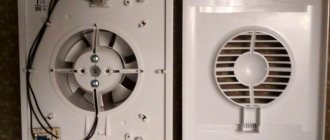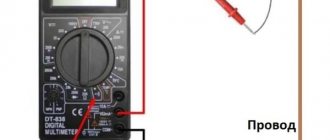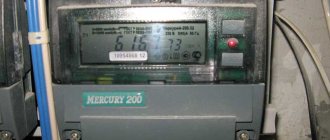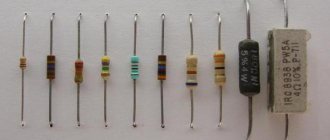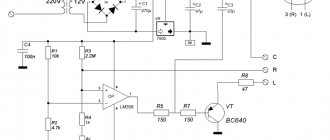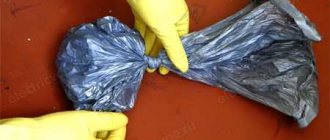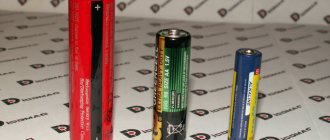Publication date: September 10, 2021. Category: Lamps.
Energy-saving light bulbs (belonging to the category of compact fluorescent lamps) have long conquered the market. They are considered more resource-intensive and, of course, help save a little on electricity. Such products are widely used both in private houses and apartments, and in industries. However, despite its many advantages, lamps of this type can break. Since they contain mercury vapor inside (they collide with electrons and create a glow), this is dangerous for humans.
Manifestations of mercury poisoning
As a rule, the first symptoms of acute mercury vapor poisoning appear within a few hours. At first, the person experiences weakness and headaches. After some time, a metallic taste appears in the mouth, and it becomes more difficult to swallow. The gums swell and salivation increases. All this provokes the appearance of quite severe vomiting. At the same time, the stomach begins to hurt severely, and a person may experience diarrhea with blood.
In particularly severe situations, inflammatory processes begin in the lungs, and the temperature rises (can jump to 40 degrees). However, in children, symptoms begin to appear earlier than in adults. If we are talking about severe poisoning, the outcome can be very sad. Therefore, when the first alarming signs appear, you should immediately call an ambulance.
Mercury is an extremely dangerous metal for humans. The severity of poisoning by this component directly depends on the amount of vapor that a person inhaled. Therefore, we are not always talking about acute poisoning.
Is a broken lamp really that dangerous?
One broken light bulb cannot cause a serious threat to human life. Much more mercury vaporization is required to cause acute poisoning. By the way, ordinary energy-saving products contain 1-5 mg of mercury (only in industrial-type products this value can reach up to 400 mg). Real danger is possible if there is at least 0.25 mg of hazardous vapors per cubic meter of room.
For clarity, let’s compare an energy-saving lamp with an old thermometer. The latter contains 2 g of dangerous metal. Having made simple calculations, we come to the conclusion that this is commensurate with 2000 mg. However, this is not even the most dangerous thing about a broken thermometer, but the fact that the mercury in it consists of metal balls. If such a product is broken, they can roll into cracks in the floor or under the baseboard and will emit toxic fumes for many years.
Compact fluorescent lamps (CFLs) do not have these bulbs. Mercury is in a vapor state, and if we talk about higher-quality lamps made in Europe, then in this case mercury amalgam is used (it is not so dangerous).
Based on this, a broken lighting device of this type cannot cause as much damage as a thermometer. However, this does not mean that if a CFL is damaged, there are no special rules to follow. Even minimal exposure to mercury vapor is important to minimize.
Is a broken lamp really that dangerous to humans?
It has been established that one small fluorescent light bulb does not contain enough mercury to cause harm to humans.
However, since mercury still belongs to the first class of hazard, it is important to remember that taking precautions when using and disposing of fluorescent light bulbs reduces the risk of negative consequences to zero. If the steps for disposing of a broken lamp were carried out correctly, then the health risk is minimal or completely absent. Of course, the individual characteristics of the human body also matter. It is important to use fluorescent lamps correctly. Before screwing into the lamp, the integrity of the bulb is checked.
In addition, mercury vapor will not spread throughout the room if the fluorescent lamp breaks while it is turned off.
Eliminating the consequences of a broken lamp
If the CFL breaks, then first of all you need to remove all household members and pets from the room, open the windows and close the doors. You should not allow the vapors to disperse throughout the apartment, so drafts should not be created. Airing the room should take 24 hours.
After this, the sequence of actions will be as follows:
- Pour tap water into a jar and add potassium permanganate.
- We put on protective rubber gloves (do not let the fragments come into contact with the skin) and put all parts of the lamp into the liquid. It is more convenient to collect small glass particles with a wet rag or paper (we also put it in a manganese solution).
- We check the floor, furniture and all surfaces for the presence of light bulb remains (it’s worth looking under the baseboards and lifting the linoleum).
- We tightly close the container with mercury waste and put it in a dark place (where children will not find it) and call the Ministry of Emergency Situations to find out where it is best to dispose of the waste (information on a specific region can also be found on the Internet).
- We take a shower.
- We wash the clothes (if you don’t mind, it’s better to dispose of them) that were used for cleaning (it’s better to use a basin, not a washing machine) separately from other laundry.
However, this is not all the manipulations that need to be performed. After all the fragments have been removed and disposed of, it is important to properly clean the room.
Demercurization
This word is usually used to describe measures aimed at neutralizing mercury or its vapors. To do this, you need to not just wash the room, but use specialized compounds for this. It’s not so easy to get them, but components that are found in almost every home are also suitable for processing:
According to safety measures, demercurization is carried out every day for 4 days. During work, you need to protect your hands with gloves. Such measures will help to completely eliminate the harmful effects of mercury vapor, even if it was minimal.
What not to do
In a critical situation, a person may unknowingly begin to perform actions that will only aggravate the situation.
Therefore, it is important to remember what you should never do:
- Collect fragments with a vacuum cleaner. Then the mercury will settle inside the device and you will have to throw it away. If the vacuum cleaner has a bad filter, then the vapors will spread even more throughout the room.
- Turn on the air conditioner. In this case, it will also begin to suck in dangerous inclusions.
- Use brooms or brooms. The mercury particles will only fly further apart.
- Throw waste into the trash bin. The fragments in a jar of potassium permanganate must be taken to a special collection point.
The thermometer is broken, the whole apartment is running around looking for a broom and dustpan to collect the mercury. And she has already turned into balls and runs away under the bed, then under the table, then somewhere else. And you all run and run after her. But when you screw an energy-saving lamp into a socket, and it accidentally slips out of your hands and falls, for unknown reasons, no one panics. But it would be worth worrying about the lamp more than about the thermometer. In addition to small fragments, there are also many harmful and negative aspects. And the worst thing is mercury vapor. So, we exhaled, calmed down, cast aside panic, we begin.
The first thing to start with when talking about the consequences of a broken fluorescent lamp is mercury. I hasten to please you that there is no free mercury in an energy-saving lamp. For those who don’t know, or simply forgot, free mercury is a liquid, silver-colored metal. The lamp does not contain the same amount of mercury. There is evaporated mercury, or more precisely, mercury vapor. They are very harmful, because when the lamp breaks, it goes straight into the respiratory tract and is absorbed into the body through the lungs.
Now take a deep breath. One lamp, depending on the power, contains from 0.1 to 0.5 grams of mercury. As I said earlier, it is contained in the form of vapor. And steam is the most harmful thing. The mercury that became balls after breaking the thermometer can be collected. It is most convenient to use regular wide tape or children's plasticine. But how will you collect pairs? They can be ventilated. It is fair to say that this is not some kind of fatal dose of mercury, but it may be poisoning. The main thing is not to forget that everyone’s body is different, and, accordingly, everyone’s immunity is different. And some may not have anything, but others will be poisoned. So you need to be careful.
Now I propose to delve a little into anatomy and talk about the impact directly on the body. And, no less important, about the consequences of such exposure. The consequences can be very different. First, let's look at the possible options for poisoning.
The most dangerous type of mercury vapor poisoning is acute poisoning. With this option, a large amount of mercury vapor enters the human body over a short period. If poisoning occurs, the consequences will not be long in coming. A couple of hours and the primary signs of poisoning will appear. And they are very diverse. From abdominal pain to bloody diarrhea, from pneumonia to swollen gums, nausea and vomiting. Most often the temperature rises to at least thirty-eight degrees. In case of particularly severe poisoning, death is possible. But let's not talk about sad things. This is actually not a common occurrence. Most likely, a broken light bulb will not poison you, but no one has canceled safety precautions. The last thing you want to do is break a hot energy-saving fluorescent lamp. The most dangerous fumes are hot ones, so it is not recommended to break a lamp that has just been turned off. According to statistics, mercury poisoning occurs extremely rarely in domestic conditions, but, I repeat, you need to be careful not to become one of the sad statistics.
The next two types of poisoning have nothing to do with a broken lamp at all, but it is useful to know about it. At a minimum, to know how to act in such a situation. The first of these is chronic mercury vapor poisoning. It occurs as a result of prolonged exposure to vapors with a slight excess of mercury content. This impact can last up to several years. And it affects the central nervous system. Depending on the type of lesion, symptoms appear. It could simply be fatigue, drowsiness or apathy. In more severe forms, the effect on the brain is manifested, and this is bad. There may be memory loss and severe tremors in the limbs.
The second form is micromercurialism. This poisoning occurs gradually. As a rule, the body is constantly exposed to a tiny concentration of mercury vapor over a very long period of time. Long before the appearance of primary symptoms, the ability to smell is sharply reduced. Signs of such poisoning include decreased performance, drowsiness, apathy and memory loss. This general poisoning of the body also leads to a reduction in immunity. Most often, such poisoning occurs in those who work in mercury-related industries and neglect safety measures. But the reasons may be different, and such poisoning is possible in domestic conditions. Especially in cases where the mercury from the broken thermometer was not carefully removed. It can lie in the folds of the parquet, evaporate and slowly poison you.
Now, I think everyone is interested in learning about precautions and safety measures. It might also be interesting to know what to do if a thermometer or lamp breaks. So at the end of the article we’ll talk about this. You checked the temperature. Everything is fine with my health. But, putting the thermometer in its case, it jumped out of my hands and... Well, in general, he crashed. Mercury rolls around in balls on the floor, what should I do? First of all, don't panic. Panic is bad and, in general, this is the lot of the weak. The first thing to do is open the window and close the door. It is necessary to ventilate the room for a couple of hours, without creating a draft, as this can spread the fumes throughout the apartment. It is also worth restricting people’s access to the site of the thermometer’s terrorist attack. Under no circumstances use a broom or vacuum cleaner to collect mercury. Will be worse. In this situation, tape and children's plasticine are our everything. They will stick the mercury to themselves, rather than chase it from corner to corner.
Now about the terrorism that a fluorescent lamp can cause. She crashed, but it's easier to cope with. Firstly, there is four times less mercury in the lamp. But the downside is that, unlike a thermometer, the lamp does not contain metal, but its vapor. It is worth expelling everyone from the room in which the sabotage occurred. Just like with a thermometer, in no case should you create a draft. In this situation he is even more dangerous. If possible, you will need a jar, preferably with a solution of potassium permanganate. A jar of water will also work. You need to collect all the fragments that you can collect with your hands and take them for disposal. If this is not possible, you need to pack it well and throw it away. Then vacuum or wipe the floor with a wet cloth. After the room has been ventilated, it can be considered that the danger has passed.
What happens if a fluorescent lamp breaks?
The thermometer is broken, the whole apartment is running around looking for a broom and dustpan to collect the mercury. And she has already turned into balls and runs away under the bed, then under the table, then somewhere else. And you all run and run after her. But when you screw an energy-saving lamp into a socket, and it accidentally slips out of your hands and falls, for unknown reasons, no one panics. But it would be worth worrying about the lamp more than about the thermometer. In addition to small fragments, there are also many harmful and negative aspects. And the worst thing is mercury vapor. So, we exhaled, calmed down, cast aside panic, we begin.
The first thing to start with when talking about the consequences of a broken fluorescent lamp is mercury. I hasten to please you that there is no free mercury in an energy-saving lamp. For those who don’t know, or simply forgot, free mercury is a liquid, silver-colored metal. The lamp does not contain the same amount of mercury. There is evaporated mercury, or more precisely, mercury vapor. They are very harmful, because when the lamp breaks, it goes straight into the respiratory tract and is absorbed into the body through the lungs.
Now take a deep breath. One lamp, depending on the power, contains from 0.1 to 0.5 grams of mercury. As I said earlier, it is contained in the form of vapor. And steam is the most harmful thing. The mercury that became balls after breaking the thermometer can be collected. It is most convenient to use regular wide tape or children's plasticine. But how will you collect pairs? They can be ventilated. It is fair to say that this is not some kind of fatal dose of mercury, but it may be poisoning. The main thing is not to forget that everyone’s body is different, and, accordingly, everyone’s immunity is different. And some may not have anything, but others will be poisoned. So you need to be careful.
Now I propose to delve a little into anatomy and talk about the impact directly on the body. And, no less important, about the consequences of such exposure. The consequences can be very different. First, let's look at the possible options for poisoning.
The most dangerous type of mercury vapor poisoning is acute poisoning. With this option, a large amount of mercury vapor enters the human body over a short period. If poisoning occurs, the consequences will not be long in coming. A couple of hours and the primary signs of poisoning will appear. And they are very diverse. From abdominal pain to bloody diarrhea, from pneumonia to swollen gums, nausea and vomiting. Most often the temperature rises to at least thirty-eight degrees. In case of particularly severe poisoning, death is possible. But let's not talk about sad things. This is actually not a common occurrence. Most likely, a broken light bulb will not poison you, but no one has canceled safety precautions. The last thing you want to do is break a hot energy-saving fluorescent lamp. The most dangerous fumes are hot ones, so it is not recommended to break a lamp that has just been turned off. According to statistics, mercury poisoning occurs extremely rarely in domestic conditions, but, I repeat, you need to be careful not to become one of the sad statistics.
The next two types of poisoning have nothing to do with a broken lamp at all, but it is useful to know about it. At a minimum, to know how to act in such a situation. The first of these is chronic mercury vapor poisoning. It occurs as a result of prolonged exposure to vapors with a slight excess of mercury content. This impact can last up to several years. And it affects the central nervous system. Depending on the type of lesion, symptoms appear. It could simply be fatigue, drowsiness or apathy. In more severe forms, the effect on the brain is manifested, and this is bad. There may be memory loss and severe tremors in the limbs.
What to do if a fluorescent light bulb is broken
Often, when a lamp is broken, people do not think about the existing danger, because they are not accustomed to the fact that a light bulb may contain substances hazardous to health. The fact is that for a long time incandescent lamps were used in homes, which were distinguished by the simplicity of their operation and did not contain any impurities. When they were replaced by fluorescent lamps, the situation changed dramatically. It is important to know the consequences of breaking a fluorescent lamp.
Each lamp contains 0.1 – 0.5 grams of mercury. When the housing is damaged, the mercury is not converted into balls that emerge from the broken thermometer. With a fluorescent light bulb, everything goes into the air. This dose is considered very small to cause significant harm to the body, however, if the body’s immunity is weak, then poisoning can occur. According to the classification of substances, mercury belongs to the first class of increased danger.
The most dangerous poisoning is considered to be acute poisoning. In this case, a significant amount of mercury vapor enters the human body in a short time. Symptoms of poisoning will appear quickly and may vary from case to case. It could be:
- Abdominal pain;
- Nausea;
- Vomit;
- Bloody diarrhea;
- Swollen gums;
- Pneumonia;
- Increased body temperature.
Next comes chronic poisoning, which can only be obtained through prolonged exposure to vapors. The vapor concentration should be slightly higher than normal. The duration of exposure can reach up to 1-2 years, after which the central nervous system is damaged. Symptoms are typical:
- Chronic fatigue.
- Apathy.
- Drowsiness.
- Memory impairment.
- Trembling in arms and legs.
After this, the next stage of chronic poisoning occurs. This requires a very long period of exposure to tiny concentrations of mercury on the body. This stage of poisoning can appear in industries that are somehow associated with mercury. The primary symptoms include deterioration in odor perception, followed by the following symptoms:
- Prostration.
- Drowsiness.
- Partial loss of recent events.
- Apathy.
The first step is to ventilate the room, but do not create a draft.
It will be good if you have a jar of potassium permanganate, but if you don’t have potassium permanganate, water will do. All the fragments from a broken lamp are placed in a jar and ideally taken for disposal. It is advisable to wear gloves before doing this. The surface must be well cleaned and rinsed.
If possible, chemical treatment would be the best option. The advantage of this method is that any remaining mercury residues have reacted with the chemical. After they react, non-volatile compounds are formed, they will settle as salts and will be easily washed off. To do this, dissolve about 2 grams of potassium permanganate in a liter of water. When a chemical reaction occurs in water, the output will be a solution of potassium permanganate, at a concentration of 0.02. The solution should be used to treat all places where there may have been fragments from a light bulb or other broken devices that contain mercury. The applied solution should be left for 6-8 hours, after which it should be washed off with warm water and soap. It is advisable to repeat the procedure 2-3 times in the following days. Instead of potassium permanganate you can use:
- Alcohol solution of 5% iodine.
- Bleach or other products containing chlorine.
- Soap solutions with the addition of soda.
For more professional demercurization services, you can use the services of various companies that specialize in this. Everything will be done very quickly and with all guarantees. The advantage will be that they have various instruments for measuring mercury concentrations.
What harm does broken fluorescent lamps cause?
Often, when a lamp is broken, people do not think about the existing danger, because they are not accustomed to the fact that a light bulb may contain substances hazardous to health.
The fact is that for a long time incandescent lamps were used in homes, which were distinguished by the simplicity of their operation and did not contain any impurities. When they were replaced by fluorescent lamps, the situation changed dramatically.
It is important to know the consequences of breaking a fluorescent lamp.
Harm from fluorescent lamps
The fluorescent lamp contains mercury vapor, which cannot but cause concern. Since the lamp is fragile, there is a possibility that you will break it during installation or transportation.
In addition to fragments, when the housing is broken, mercury vapor comes out. However, here it is necessary to clarify that this mercury differs from the mercury in the thermometer, which is called free. The lamp contains evaporated mercury, or rather only its vapor.
This is very dangerous, as it can enter the body directly through the lungs.
Each lamp contains 0.1 – 0.5 grams of mercury. When the housing is damaged, the mercury is not converted into balls that emerge from the broken thermometer. With a fluorescent light bulb, everything goes into the air.
This dose is considered very small to cause significant harm to the body, however, if the body’s immunity is weak, then poisoning can occur.
According to the classification of substances, mercury belongs to the first class of increased danger.
What kind of poisoning can you get?
The most dangerous poisoning is considered to be acute poisoning. In this case, a significant amount of mercury vapor enters the human body in a short time. Symptoms of poisoning will appear quickly and may vary from case to case. It could be:
- Abdominal pain;
- Nausea;
- Vomit;
- Bloody diarrhea;
- Swollen gums;
- Pneumonia;
- Increased body temperature.
Excessive poisoning can be fatal. However, this happens extremely rarely, since the light bulb contains too little of a harmful substance to cause poisoning in everyday life. The most serious harm to health comes from broken hot lamps. This is due to the fact that hot steam is the most dangerous.
Next comes chronic poisoning, which can only be obtained through prolonged exposure to vapors. The vapor concentration should be slightly higher than normal. The duration of exposure can reach up to 1-2 years, after which the central nervous system is damaged. Symptoms are typical:
- Chronic fatigue.
- Apathy.
- Drowsiness.
- Memory impairment.
- Trembling in arms and legs.
After this, the next stage of chronic poisoning occurs. This requires a very long period of exposure to tiny concentrations of mercury on the body. This stage of poisoning can appear in industries that are somehow associated with mercury. The primary symptoms include deterioration in odor perception, followed by the following symptoms:
- Prostration.
- Drowsiness.
- Partial loss of recent events.
- Apathy.
What should you do if a fluorescent lamp is broken?
In a situation with a broken fluorescent lamp, you must follow certain rules:
The first step is to ventilate the room, but do not create a draft.
It will be good if you have a jar of potassium permanganate, but if you don’t have potassium permanganate, water will do. All the fragments from a broken lamp are placed in a jar and ideally taken for disposal. It is advisable to wear gloves before doing this. The surface must be well cleaned and rinsed.
Chemical treatment
If possible, chemical treatment would be the best option. The advantage of this method is that any remaining mercury residues have reacted with the chemical.
After they react, non-volatile compounds are formed, they will settle as salts and will be easily washed off. To do this, dissolve about 2 grams of potassium permanganate in a liter of water.
When a chemical reaction occurs in water, the output will be a solution of potassium permanganate, at a concentration of 0.02. The solution should be used to treat all places where there may have been fragments from a light bulb or other broken devices that contain mercury.
The applied solution should be left for 6-8 hours, after which it should be washed off with warm water and soap. It is advisable to repeat the procedure 2-3 times in the following days. Instead of potassium permanganate you can use:
- Alcohol solution of 5% iodine.
- Bleach or other products containing chlorine.
- Soap solutions with the addition of soda.
For more professional demercurization services, you can use the services of various companies that specialize in this. Everything will be done very quickly and with all guarantees. The advantage will be that they have various instruments for measuring mercury concentrations.
Disposal of a broken lamp
It is best to take a jar of fragments and mercury to a single duty dispatch service from the Ministry of Emergency Situations. Every city has several similar places. As a last resort, the fragments are tightly packed and thrown away. There are even companies that are engaged in recycling mercury thermometers, lamps, etc.
about the harm from broken lamps
The benefits and harms of infrared lamps
Video about the harm from broken lamps
Fluorescent lamps are highly efficient thanks to active mercury vapor placed inside the bulb. Under the action of a discharge, it emits a glow in the ultraviolet spectrum. Such lamps are completely safe for humans throughout the entire period of operation. However, if they explode, then if the glass case is damaged, there is a danger of mercury contamination of the environment and poisoning of people in the room. Therefore, if a fluorescent lamp breaks, it is necessary to take urgent measures to dispose of it and neutralize toxic substances.
Recycling as a second life for a fluorescent lamp
Unfortunately, not all leftover fluorescent lamps can be recycled.
Each locality has a collection station for materials after emergency situations at home, including mercury lamps. Do not forget to tell the station under what circumstances the fluorescent lamp was damaged.
Attention! Do not flush fluorescent lamp fragments down the toilet!
In the future, the damaged device will be processed and released in a new form. In many cases, the remains of a broken mercury lamp are used as the basis for other devices, including thermometers.
Dangerous consequences of broken lamps
Most people are well aware of the harm that mercury can cause to the body. Therefore, when a thermometer breaks, everyone strives to collect dangerous balls from the broken product as quickly as possible. With energy-saving lamps the situation is completely different. Initially, a broken flask does not bother anyone, and measures are taken only when negative consequences occur.
This attitude is completely wrong, since the mercury vapor contained in the flask is much more dangerous than mercury in its pure form. Their main harm lies in the fact that from a destroyed lamp they enter directly into the respiratory tract, and then penetrate into the body through the lungs.
The mercury content in fluorescent lamps depends on their power and is 0.1-0.5 grams. If mercury from a broken thermometer in the form of balls is relatively easy to collect, then with its vapors everything is much more complicated. And, although the contents of the flask are not fatal to humans, there is nevertheless a very real danger of poisoning.
When a fluorescent lamp breaks, the very first action to neutralize harmful substances is to ventilate the room. Due to this, the concentration of mercury vapor is noticeably reduced, the main thing is that this procedure is carried out in a timely manner.
What to do if a fluorescent lamp breaks
Fluorescent lamps are highly efficient thanks to active mercury vapor placed inside the bulb. Under the action of a discharge, it emits a glow in the ultraviolet spectrum. Such lamps are completely safe for humans throughout the entire period of operation.
However, if they explode, then if the glass case is damaged, there is a danger of mercury contamination of the environment and poisoning of people in the room.
Therefore, if a fluorescent lamp breaks, it is necessary to take urgent measures to dispose of it and neutralize toxic substances.
Dangerous consequences of broken lamps
Most people are well aware of the harm that mercury can cause to the body. Therefore, when a thermometer breaks, everyone strives to collect dangerous balls from the broken product as quickly as possible. With energy-saving lamps the situation is completely different. Initially, a broken flask does not bother anyone, and measures are taken only when negative consequences occur.
This attitude is completely wrong, since the mercury vapor contained in the flask is much more dangerous than mercury in its pure form. Their main harm lies in the fact that from a destroyed lamp they enter directly into the respiratory tract, and then penetrate into the body through the lungs.
mercury in fluorescent lamps depends on their power and is 0.1-0.5 grams. If mercury from a broken thermometer in the form of balls is relatively easy to collect, then with its vapors everything is much more complicated.
And, although the contents of the flask are not fatal to humans, there is nevertheless a very real danger of poisoning.
When a fluorescent lamp breaks, the very first action to neutralize harmful substances is to ventilate the room. Due to this, the concentration of mercury vapor is noticeably reduced, the main thing is that this procedure is carried out in a timely manner.
Electric Shock Protection
Harm to the human body
A more detailed consideration of the effects of mercury vapor on the human body will help you understand the consequences of a broken fluorescent lamp. First of all, mercury causes poisoning.
Acute poisoning is considered the most dangerous. It involves the ingestion of a large amount of harmful substances into the body in a short period of time. The first signs of poisoning appear within two hours.
Main symptoms:
- Nausea and vomiting.
- Stomach ache.
- Swollen gums.
- Pneumonia.
- Bloody diarrhea, etc.
These symptoms are accompanied by fever, and in particularly severe cases the victim may die. The greatest danger to the body is from vapors that are in a heated state, so you must very carefully unscrew the fluorescent lamp that has just been turned off.
Sometimes it happens that the remaining mercury is not completely removed and, remaining in the room, it continues to affect the body.
This leads to chronic poisoning, accompanied by damage to the central nervous system. Symptoms manifest themselves in the form of drowsiness or apathy, fatigue.
A severe form of poisoning affects the brain, causing memory to noticeably deteriorate with simultaneous severe tremors in the limbs.
Harm to the human body
A more detailed consideration of the effects of mercury vapor on the human body will help you understand the consequences of a broken fluorescent lamp. First of all, mercury causes poisoning.
Acute poisoning is considered the most dangerous. It involves the ingestion of a large amount of harmful substances into the body in a short period of time. The first signs of poisoning appear within two hours.
- Nausea and vomiting.
- Stomach ache.
- Swollen gums.
- Pneumonia.
- Bloody diarrhea, etc.
These symptoms are accompanied by fever, and in particularly severe cases the victim may die. The greatest danger to the body is from vapors that are in a heated state, so you must very carefully unscrew the fluorescent lamp that has just been turned off.
Sometimes it happens that the remaining mercury is not completely removed and, remaining in the room, it continues to affect the body. This leads to chronic poisoning, accompanied by damage to the central nervous system. Symptoms manifest themselves in the form of drowsiness or apathy, fatigue. A severe form of poisoning affects the brain, causing memory to noticeably deteriorate with simultaneous severe tremors in the limbs.
What are the dangers of mercury poisoning?
According to the classification catalog of waste, mercury is a harmful substance belonging to the first class of the most dangerous. It negatively affects the body even in small quantities. To do this, a person just needs to inhale its vapor. After a certain period of time, the tissues will begin to absorb mercury, and it is almost impossible to remove it.
Must watch: How you can inhale mercury without knowing it
Mercury poisoning has symptoms of standard toxic poisoning:
- severe abdominal pain;
- heat;
- inflammation of the gums and lungs;
- bloody diarrhea and nausea.
Fig. 7 – signs of chemical poisoning.
Mercury is especially dangerous for pregnant women. Poisoning causes memory loss, apathy and drowsiness. If these signs become apparent after collecting fragments of a fluorescent lamp, even with an insignificant mercury content in the flask, urgent hospitalization is necessary. After the examination, the doctor will prescribe medications to neutralize mercury in the body.
Eliminating the consequences of a broken lamp
Not everyone knows what actions to take if a fluorescent lamp breaks. In such cases, you should not panic.
First of all, you need to do the following:
- In the room where the broken lamp was located, you need to open the windows for 1.5 hours to ventilate the room. The room can be left open longer, this will only improve the result and remove mercury faster. Before ventilation, not only people, but also pets must leave the room.
- You should get rid of any fragments and other parts of the lamp as soon as possible. The mercury powder is collected using a damp sponge on a homemade cardboard scoop. The smallest glass fragments are removed from the surface with tape or adhesive tape. Everything removed must be securely closed in a sealed plastic bag.
- After the room has been ventilated, it needs to be wet cleaned. Treatment and disinfection of the floor surface is carried out with an aqueous solution of bleach or potassium permanganate. Washing is carried out in the direction from the edges to the center of the room. This method will allow you to collect the remaining unremoved fragments and mercury.
- Shoe soles must be washed with chlorine solution.
- The used rag is put into a bag, sealed and taken away for recycling or in special bins.
It is forbidden to use a vacuum cleaner or broom to collect fragments, or to flush them down the toilet, which is absolutely forbidden to do. At the collection and disposal point, you must describe in detail the circumstances of the damage that occurred. A broken fluorescent lamp and its parts are sent for recycling, where they serve as the basis for the manufacture of new lighting sources. Not only lamps are made from them, but also thermometers.
Poisoning
The dangers of fluorescent lamps are associated with the presence of mercury. During the manufacture of products, a phosphor, argon gas with mercury vapor is used. Great harm is expected from a broken fluorescent lamp, since indoors the indicator of these components will exceed the norm.
Risk areas for mercury poisoning include:
- Pregnant women.
- Babies.
- Small children.
- Old men.
If a fluorescent lamp breaks, there will be severe harm to human health. In this case, it is necessary for a special service to handle waste disposal. And for people who were in the room, you need to call a doctor.
Rules for using fluorescent lamps
Fluorescent lamps operating on the basis of mercury vapor do not pose any danger to others if they are in good working order and all necessary operating rules are followed.
Among the rules we highlight the following:
- When purchasing fluorescent lamps, it is recommended to give preference to trusted manufacturers that guarantee the quality of their products. Control is carried out at all stages of the technological process. Lamps go on sale in absolutely good condition, which is confirmed by established codes and certificates.
- Before installing a light bulb in a luminaire, carefully check the integrity of each lamp. The presence of even minor cracks serves as grounds for returning the product to the manufacturer under warranty.
- During operation, the lamp must be handled carefully so as not to break it. Then the flask with mercury is guaranteed to remain intact. When screwing in and out, hold onto the light bulb body and do not apply force to the glass elements. Otherwise, the flask may crack and explode in your hands.
- It is recommended to periodically check fluorescent lamps for cracks and other defects. Particular attention should be paid to lighting sources that have been in use for more than a year.
- Avoid using lampshades and shades that are too tight. An energy-saving light bulb with a power of over 10 W tends to become very hot. As a result, low-quality products overheat in a confined space, their electrical circuits catch fire, and the flasks receive irreversible physical damage, including explosion.
Sometimes people do certain things with fluorescent lamps that pose a serious danger to others. For example, when a lamp breaks down, some owners repair the old one instead of buying a new lamp. If you interfere incorrectly with the circuit, depressurization of the flask containing mercury is quite possible. Therefore, in the absence of experience and practical skills, it is recommended not to disassemble and repair, but to buy a new lamp so that the old one does not accidentally explode.
Disposal of fluorescent lamps
Types of fluorescent lamps
Advantages and disadvantages of fluorescent lamps
We often hear the question: if a light bulb breaks at home, is it dangerous? Of course, this is dangerous, but not to such an extent that it is necessary to call the Ministry of Emergency Situations or panic. But if 20 light bulbs break at the same time, this is already serious!
The fact is that inside an energy-saving lamp there are mercury vapors or mercury almagama, substances of the first class of danger: they are inside the tube and leave it only when the integrity of the lamp is damaged.
Many people confuse the mercury filling of the lamp and the internal luminescent coating of the glass tube, which during operation or in a non-working light bulb can fall off and remain inside. This situation is absolutely not dangerous to health; the lamp becomes a source of mercury evaporation only when broken!
Mercury in fluorescent lamps
In the modern world, dim incandescent lamps are practically not used. Now good indoor lighting is achieved with less energy consumption. Energy-saving lamps are used for this. They are also called compact fluorescent lamps
or
CFL
. There is no difference, it’s just that the word energy-saving is an invention of marketers.
Advantages of compact fluorescent lamps:
• standard base, similar dimensions (all incandescent lamps can be easily replaced with modern ones). • different shades of light - warm white, cool white or daylight, choose the one that suits you. You can use a different shade for each room. • The warranty on compact fluorescent lamps or CFLs is higher than that of incandescent lamps. • low cost (compared to LED).
Do not forget that more and more officials in the Government of the Russian Federation are thinking about new energy saving programs. This is reflected in the laws adopted: • Since 2011, the production of incandescent lamps with a power of 100 W and above has been banned; • Since 2013, incandescent lamps with a power of 75 W and above have been banned from production; • In 2014, production of 25 W incandescent lamps was stopped.
Consequences
Mercury vapor is dangerous to health because it can cause chronic poisoning, which is manifested by hand tremors, gingivitis, and disturbances in the functioning of the central nervous system. With a high concentration of vapors (massive breakdown of energy-saving light bulbs), acute mercury poisoning is possible, which is manifested by weakness, abdominal pain, vomiting and bleeding gums (see symptoms of mercury poisoning).
Mercury in vapor form is most dangerous for children and pregnant women, so it is important to know how to act in such a situation. One broken lamp will not cause serious harm, but this does not mean that precautions can be ignored.
What to do when a light bulb bursts or breaks?
- Close the room in which the incident occurred and remove people and animals from there.
- Open a window, closing windows in other rooms to eliminate drafts. This is the main event, which is the most important of the entire algorithm of actions. The vaporous mercury must leave the room. You need to ventilate for at least 2 hours, and preferably 12-24 hours.
- Pour cold water into a jar of a suitable size, if available, add potassium permanganate to the water.
- Wear rubber gloves or plastic bags on your hands.
- Collect visible remains of the lamp in a jar, including the base.
- Small pieces of glass and luminescent coating are collected using a wet cloth or cotton wool, which is used to soak the surface. A rag and cotton wool should also be placed in a jar of water.
- Close the jar with a lid and place it in a dark, non-residential area. Later, call the Ministry of Emergency Situations and find out where you can take the waste.
- Once again, carefully examine all the places where pieces of glass from the lamp could have fallen (niches under furniture, cracks, etc.).
- Wash the floor with a chlorine-containing detergent or soap and soda solution.
- Take a shower.
There is no need to dispose of clothes and shoes used for cleaning; it is enough to wash everything in a separate basin.
Saving on health?
Fluorescent light bulbs in modern apartments, houses and offices are actively used to create basic or additional lighting. This is due to the fact that fluorescent lamps have the following advantages:
- High light parameters.
- Energy saving.
- The useful service life of a fluorescent lamp is 10-12 times longer than usual.
The presence of such advantages in the operation of fluorescent lamps allows them to be among the most common light sources. The real benefits of using them will be noticeable almost immediately.
What not to do?
- Turn on the air conditioner if there is one - mercury vapor will settle inside the device.
- Collect the remains of the lamp with a vacuum cleaner - again, the mercury will settle inside.
- You should not use a broom - careless movements can scatter small pieces of glass around the room.
- Pour the jar of water and remaining glass down the drain.
- Throw away the broken lamp or the can with the remains of the lamp in the trash or down the garbage chute.
Used (burnt-out) energy-saving lamps cannot be disposed of together with household waste; they should be taken to special collection points.

